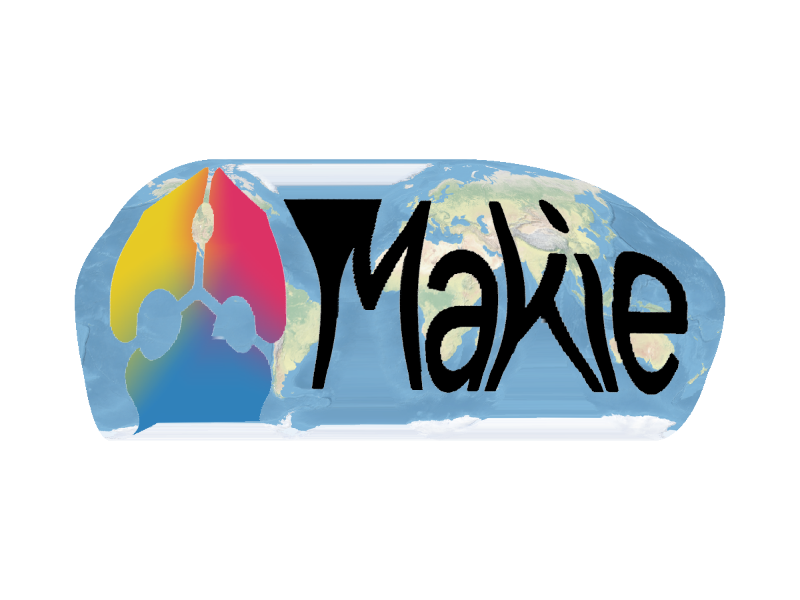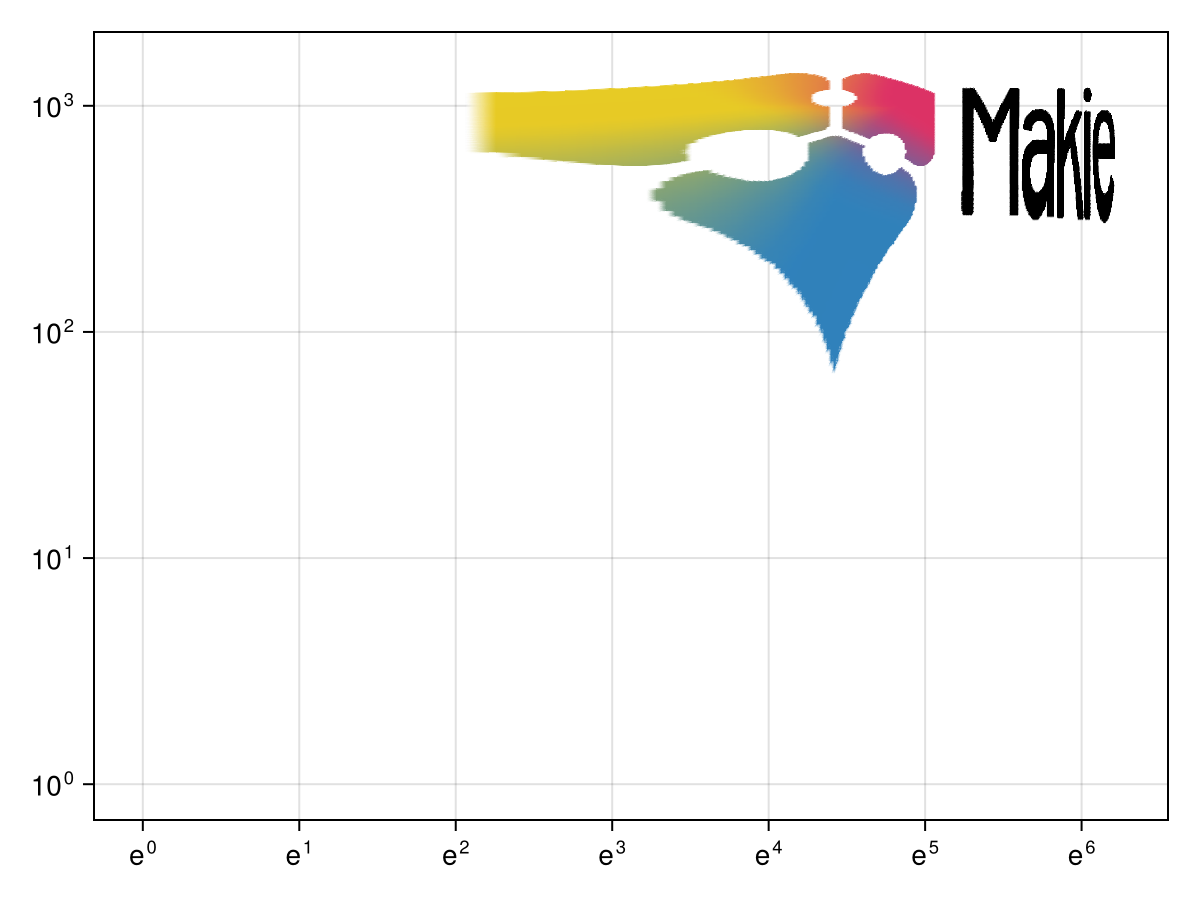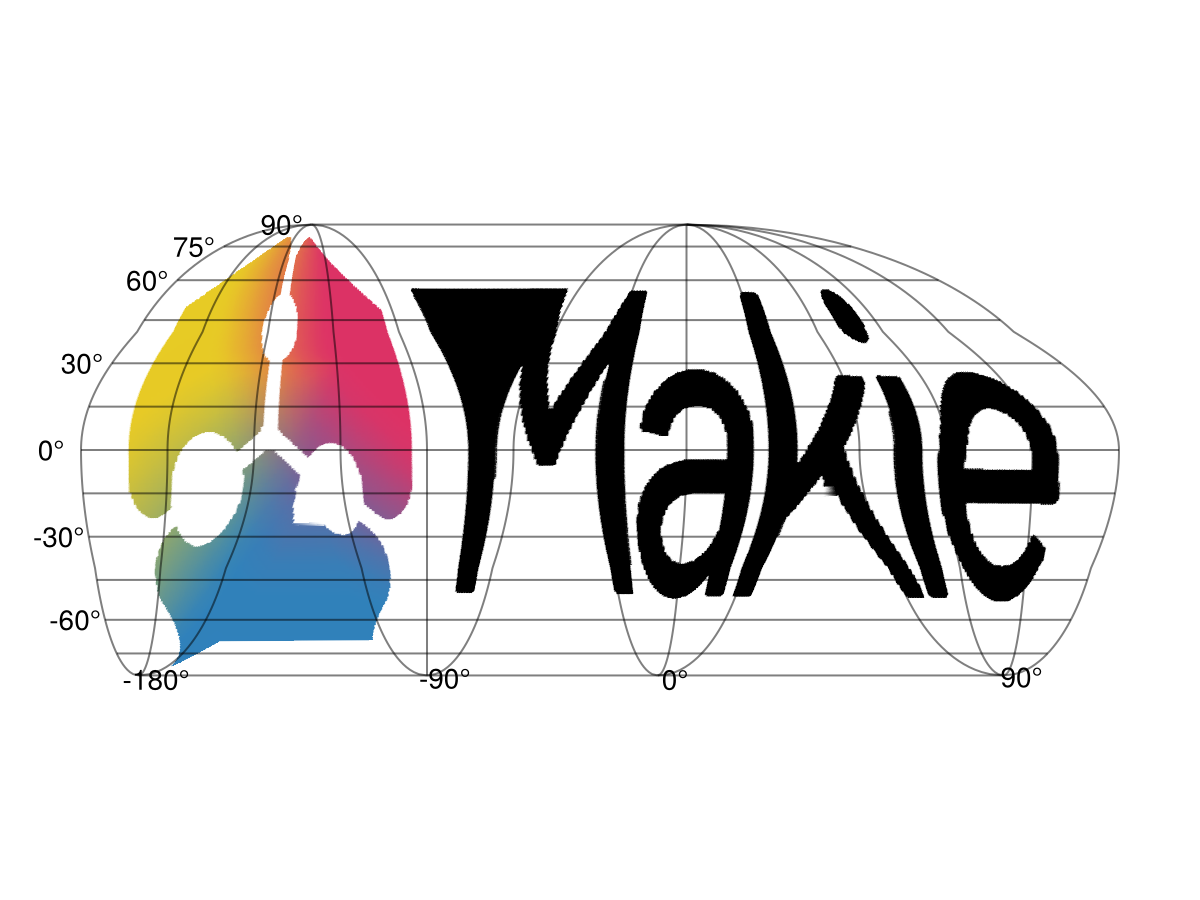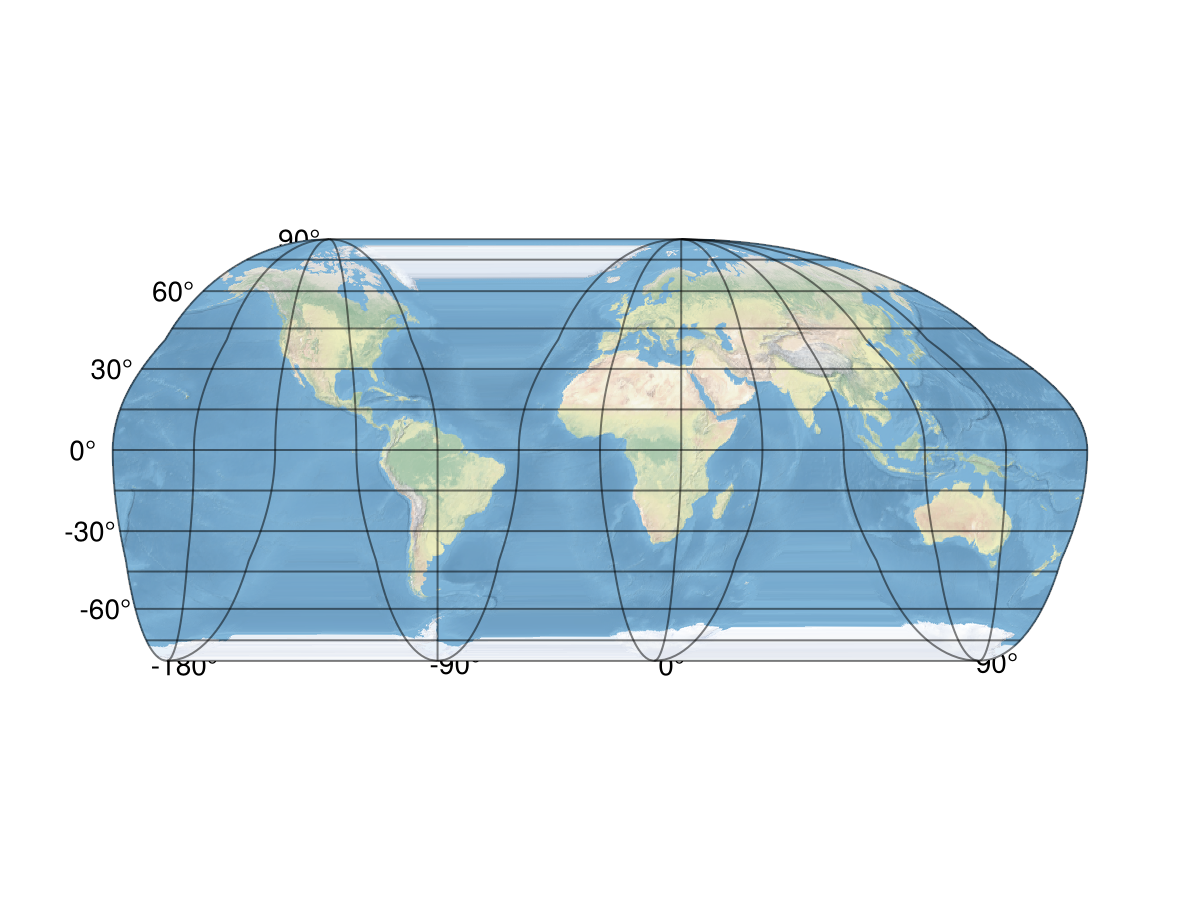The meshimage recipe

GeoMakie presents a meshimage recipe to render images in projected spaces, without having to reproject.
You can generally think of these as discretized versions of the true continuous reprojection.
meshimage works best with the GL-backends (GLMakie/WGLMakie) because they have the best inbuilt support for meshes. CairoMakie also supports meshimage, but the quality of the image will be worse unless your mesh is very fine (npoints > 1000 usually).
using GeoMakie, GLMakieAffine transform (no nonlinearity)
fig = Figure()
ax1 = Axis(fig[1, 1])
mi = meshimage!(ax1, (Makie.logo()))
fig
save("simple_scaling.png", fig)
Nonlinear but separable (log scaling)
fig = Figure()
ax1 = Axis(fig[1, 1]; xscale = log, yscale = log10)
lg = (Makie.logo())
mi = meshimage!(ax1, 1 .. size(lg, 1), 1 .. size(lg, 2), lg)
fig
save("log_scaling.png", fig)
Nonlinear and non-separable (geographic transformation)
fig = Figure()
ax1 = GeoAxis(fig[1, 1]; dest = "+proj=igh")
mi = meshimage!(ax1, -169..169, -90..90, (Makie.logo()); npoints = 400)
fig
This is peak graphic art right here! save("geo_scaling.png", fig)
Logo!
Finally, we create a kludged together GeoMakie logo with the Earth in the background, and the Makie logo at the fore!
fig = Figure()
ax1 = GeoAxis(fig[1, 1]; dest = "+proj=igh")
s1 = surface!(ax1, (-180f0)..(180f0), -90f0..90f0, zeros(size(GeoMakie.earth() |> rotr90)); shading = NoShading, color = GeoMakie.earth() |> rotr90)
fig
m1 = meshimage!(ax1, -100..100, -40..40, (Makie.logo()); npoints = 300)
m1 = meshimage!(ax1, -166..169, -90..90, (Makie.logo()); npoints = 400)
hidedecorations!(ax1)
fig
This page was generated using Literate.jl.